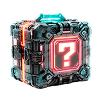Orderly is a decentralized trading protocol that combines a low-latency order book, on-chain settlement, and modular architecture. Unlike traditional DEXs and CEXs, Orderly provides infrastructure that allows others to build custom trading products—from spot DEXs to derivatives. With multichain support, SDKs, and APIs, the protocol becomes a universal solution for developers, market makers, and DeFi platforms.
Contents
- Architecture and Principles of Orderly
- Developer Tools
- Orderly Ecosystem Components
- Functions of the $ORDER Token
- Risks and Growth Vectors
- Conclusion

1. Architecture and Principles of Orderly
Orderly Network is designed as a foundational trading layer for Web3, offering developers access to order books, settlement mechanisms, and liquidity—without the need to build exchanges from scratch. Its architecture is based on separation of components: Matching Engine, Risk Engine, Orderbook, Settlement Layer, and Liquidity Vaults.
One of the key innovations is the Omnichain Orderbook, where orders from different blockchains converge into a unified pool, enabling a seamless trading environment. This design provides high liquidity without fragmenting markets across networks. The protocol supports NEAR, Arbitrum, Optimism, and is expanding to more EVM-compatible chains.
The Orderly model suits both institutional and retail use cases, from white-label exchanges to custom perpetual DEXs. High performance and modularity make it ideal for HFT bots and mobile dApps alike.
In the future, ZK solutions and rollups are expected to be integrated, further enhancing security and scalability. This positions Orderly as one of the most technically advanced trading infrastructures in the Web3 space.
2. Developer Tools
Orderly is developer-first by design: its architecture was built to minimize integration time and reduce technical barriers. One major advantage is the modular SDK, highly compatible with modern frameworks, enabling quick deployment of mobile dApps or fully featured Web3 exchanges. Below are the core tools developers can use to build on Orderly:
- React SDK: UI components for integrating trading, order books, charts, and wallets.
- Hooks: `useOrderEntry`, `useOrderStream`, `usePositions`, and other functions for API interaction in React apps.
- REST & WebSocket APIs: Place/cancel orders, fetch market data, and subscribe to real-time events.
- Types & Utils: Typed data schemas and utility wrappers in TypeScript for simplified integration.
- Documentation: A comprehensive knowledge base and guides on the official site.
Developers also get access to frontend templates and open source libraries. Advanced users can integrate HFT bots or custom strategies written in Python and JS. This makes Orderly an extremely flexible platform for both trading and investment solutions.
3. Orderly Ecosystem Components
Orderly’s efficiency stems from the clear separation of its architectural layers, each handling a specific function within the protocol. This modularity ensures fault tolerance, scalability, and easier customization. Components can be upgraded independently, allowing new features to be added without affecting the stability of the entire system.
The table below outlines the key modules of the Orderly Network and their purpose.
| Component | Function |
|---|---|
| Matching Engine | Instant order execution with minimal latency |
| Orderbook | Unified pool of orders across all connected chains |
| Settlement Layer | On-chain settlements, asset custody, and transaction auditing |
| Risk Engine | Margin calculations, liquidations, PnL, anti-manipulation checks |
| Liquidity Vaults | Tools for market makers and passive liquidity providers |
Modules communicate via standardized APIs and can be used independently or in combination. This lets developers assemble solutions on Orderly like building blocks—without depending on a monolithic backend.

4. Functions of the $ORDER Token
$ORDER is the utility and governance token of the network. It enables participation in voting, access to premium features, rewards distribution, and revenue sharing from white-label exchanges and liquidity vaults.
The token’s distribution is balanced among the community, market makers, grants, and the team. Staking mechanisms allow holders to earn protocol fee rewards and participate in product airdrops and trading initiatives.
A DAO is planned where $ORDER will be used to vote on critical protocol parameters—fees, limits, asset listings, and architectural changes. This makes the token not just a financial asset, but also a governance instrument.
Additionally, $ORDER acts as a gateway token for pro features: API throttling, private markets, and advanced analytics. Its layered utility makes it a core asset within the Orderly ecosystem.
5. Risks and Growth Vectors
Like any complex protocol, Orderly faces risks ranging from cross-chain vulnerabilities to competition from other DEXs and CEXs. To boost reliability, the team has launched a bug bounty on Immunefi with rewards up to $100K.
To tackle scalability and accessibility, the roadmap includes Orderly V2 with support for new chains and zk-rollup integrations. Index products and market-making strategies are also in development.
UX improvements are underway, including better SDKs and customizable interfaces for exchanges and trading frontends. This should significantly speed up time-to-market for new solutions.
Developer interest, ecosystem partnerships (e.g., Story and Arbitrum), and increasing integrations all validate the protocol’s resilience. With continued evolution, Orderly could become the gold standard for modular trading infrastructure in Web3.
6. Conclusion
Orderly Network is more than just a protocol—it’s a full-stack platform for building the next generation of trading products. It combines performance, scalability, and decentralization with developer-friendly tools and robust governance.
Its strong architecture, rich SDK toolkit, and mature APIs make it appealing for startups and enterprise-grade solutions alike. Staking, DAO, multichain support, and open-source components create a dynamic ecosystem built for long-term growth.
If the team delivers on the V2 roadmap and continues to engage developers and partners, Orderly could become the core trading layer of Web3 and set the standard for modular decentralized exchanges.




